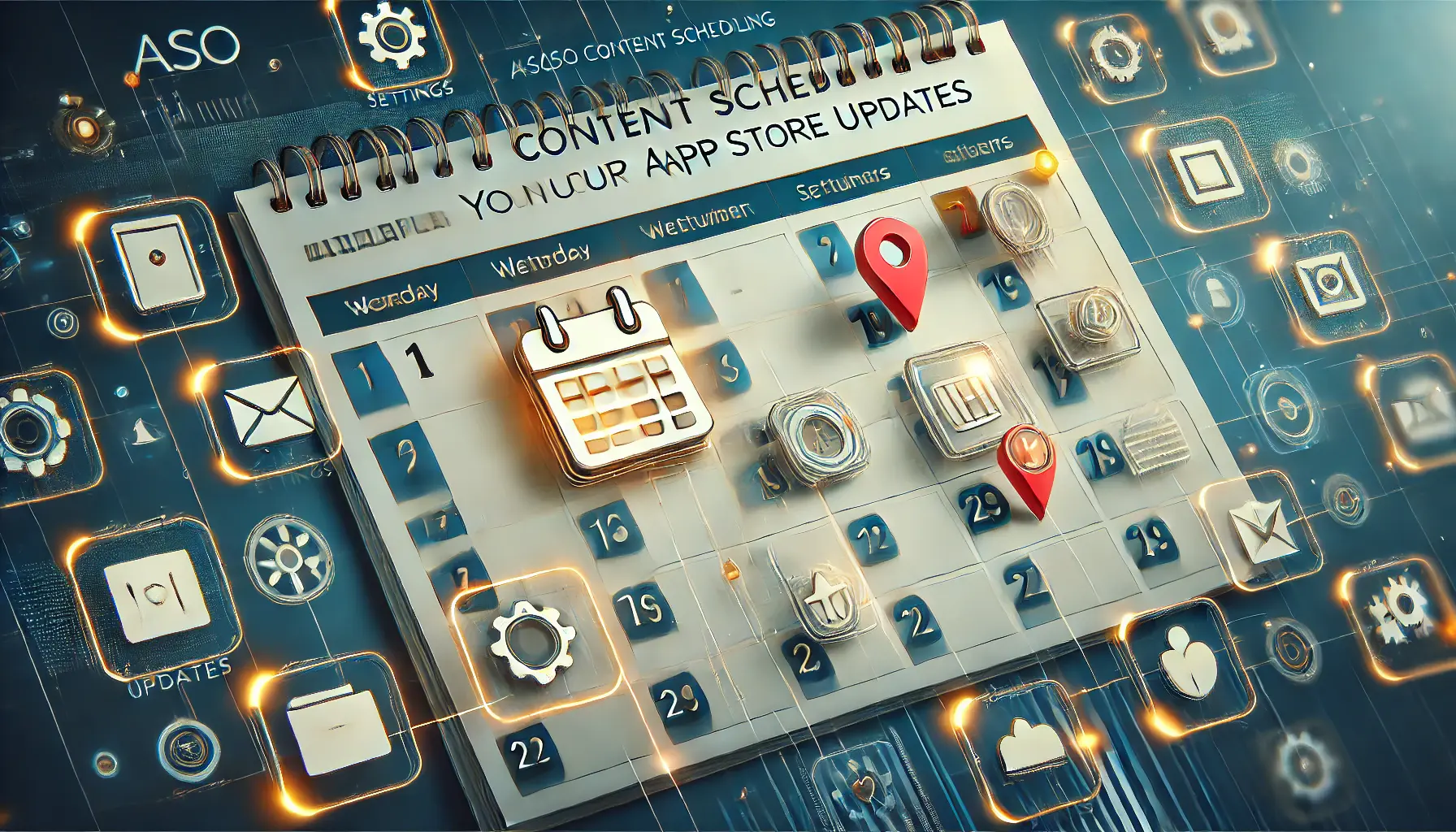Creating a content calendar is a pivotal step for SaaS companies aiming to enhance their SEO and online presence.
It’s not just about churning out content; it’s about crafting a strategic roadmap that aligns with your business goals, audience needs, and SEO best practices.
A well-planned content calendar serves as a blueprint for producing consistent, quality content that engages your target audience and drives organic traffic to your website.
In the realm of SaaS, where competition is fierce and the digital landscape is ever-evolving, having a content calendar is indispensable.
It ensures that your content marketing efforts are structured, timely, and, most importantly, effective in boosting your SEO rankings.
By integrating keyword research, audience analysis, and content variety, SaaS companies can create a content calendar that not only resonates with their audience but also propels them ahead in search engine results pages (SERPs).
- Importance of a Content Calendar
- Key Elements of an Effective Content Calendar
- Strategic Content Planning for Different Stages of the Buyer’s Journey
- Incorporating SEO Best Practices into Your Content Calendar
- Measuring the Success of Your Content Strategy
- Content Repurposing and Distribution Strategies
- Future Trends in SaaS SEO and Content Marketing
- Conclusion: Navigating the Future of SaaS SEO with Effective Content Calendar Planning
- FAQs on Content Calendar Planning for SaaS SEO
Importance of a Content Calendar
The Foundation of Your Content Strategy
At the core of any successful content marketing strategy lies a well-structured content calendar.
It acts as a strategic tool, enabling SaaS businesses to plan out their content creation and publication schedule in a way that supports their overall marketing and SEO objectives.
By laying out topics, keywords, and publishing dates ahead of time, companies can ensure a steady stream of content that is both relevant and timely.
A content calendar helps in identifying gaps in your content strategy, allowing for adjustments to be made to better target your desired audience.
It also facilitates collaboration among team members, ensuring everyone is aligned with the content goals and timelines.
Boosting SEO with Strategic Content Planning
For SaaS companies, the integration of SEO into the content calendar is crucial.
By planning content around key SEO strategies—such as keyword targeting, backlinking opportunities, and on-page optimization—businesses can significantly improve their visibility online.
A content calendar informed by SEO allows for the strategic distribution of content that caters to different stages of the customer journey, from awareness to decision-making, thereby enhancing the chances of conversion.
Moreover, a content calendar optimized for SEO ensures that your content efforts are not just a shot in the dark but are strategically aimed at increasing your website’s ranking on SERPs.
This involves not only the selection of topics and keywords but also the optimization of content formats, such as blog posts, case studies, and infographics, to meet the diverse needs of your audience.
A content calendar is not just a planning tool; it’s a strategic asset for enhancing your SaaS company’s SEO and engaging your target audience effectively.
Key Elements of an Effective Content Calendar
Designing an effective content calendar for SaaS SEO involves more than just plotting dates and topics on a spreadsheet.
It requires a deep understanding of your audience, SEO best practices, and your company’s marketing goals.
Here are the essential elements that should be incorporated into your content calendar to maximize its effectiveness.
1) Audience Insights: Understanding your target audience is the first step in creating a content calendar that resonates.
This includes knowing their challenges, questions, preferences, and the type of content they consume.
Tailoring your content to meet these needs ensures higher engagement and relevance.
2) Keyword Research: Each piece of content should be aligned with specific keywords or phrases that your target audience is searching for.
This involves conducting thorough keyword research to identify opportunities for ranking and ensuring that your content addresses these search queries effectively.
3) Content Types: Diversity in content types is key to keeping your audience engaged and catering to different preferences.
Your content calendar should include a mix of blog posts, videos, infographics, podcasts, and case studies to provide value in various formats.
4) Publishing Schedule: Consistency is crucial in content marketing.
Your content calendar should outline a regular publishing schedule that keeps your audience coming back for more.
This includes determining the best days and times to post based on when your audience is most active online.
5) SEO Optimization: Each content piece should be optimized for SEO, including the use of targeted keywords, meta descriptions, and alt tags.
This ensures that your content is discoverable by search engines and ranks higher in search results.
6) Performance Tracking: Finally, your content calendar should include a mechanism for tracking the performance of each content piece.
This involves setting up key performance indicators (KPIs) such as page views, engagement rates, and conversion rates to measure the effectiveness of your content strategy.
Incorporating these key elements into your content calendar can significantly enhance the effectiveness of your SaaS company’s SEO strategy, driving more traffic and engagement to your website.
Strategic Content Planning for Different Stages of the Buyer’s Journey
Understanding the buyer’s journey is crucial for creating content that addresses the needs and questions of your audience at each stage.
A strategic approach to content planning involves tailoring your content to guide potential customers from awareness to consideration, and finally, to the decision stage.
Here’s how to align your content calendar with the buyer’s journey:
Awareness Stage
At this stage, potential customers are just beginning to recognize their problem or need.
The goal is to provide informative and educational content that helps them understand their challenges better.
- Blog posts that address common industry problems
- Infographics that simplify complex concepts
- Educational videos that introduce key topics or trends
Consideration Stage
Now that the audience is aware of their problem, they are looking for solutions.
Content at this stage should showcase your SaaS product as a solution while providing valuable information to help them evaluate their options.
- Comparison guides between different solutions
- Case studies showcasing success stories with your product
- Webinars that deep dive into how your product solves specific problems
Decision Stage
In the decision stage, potential customers are ready to make a purchase.
Content here should aim to reassure them of their choice and provide all the necessary information to take the next step.
- Detailed product demos or tutorials
- Customer testimonials and reviews
- Comprehensive FAQs addressing any last-minute concerns
By aligning your content calendar with the buyer’s journey, you ensure that your content marketing efforts are effectively guiding potential customers through the funnel, increasing the likelihood of conversion.
Incorporating SEO Best Practices into Your Content Calendar
For SaaS companies, integrating SEO best practices into the content calendar is not just beneficial; it’s essential for online visibility and success.
SEO practices help ensure that your content is discoverable by search engines and reaches your target audience.
Here are key SEO strategies to embed within your content planning process.
Keyword Optimization
Identifying and incorporating the right keywords into your content is foundational to SEO.
Use keyword research tools to find terms and phrases that your target audience is searching for.
Include these keywords naturally in your titles, headings, and throughout the content to improve search rankings.
- Focus on long-tail keywords for more specific search queries.
- Use keywords in meta descriptions and alt tags to enhance SEO further.
Content Quality and Relevance
Search engines prioritize content that is not only keyword-rich but also valuable and relevant to the user.
Ensure that your content addresses the needs and questions of your audience, providing them with the information they are seeking.
- Create comprehensive guides and articles that cover topics in depth.
- Update existing content regularly to keep it relevant and accurate.
Link Building Strategies
Internal and external links are crucial for SEO.
They help search engines understand the structure of your site and the relevance of your content to specific topics.
Incorporate a mix of both to boost your site’s authority and user navigation.
- Link to authoritative external sources to provide additional value.
- Use internal links to guide users to related content within your site.
Mobile Optimization
With the increasing use of mobile devices to access the internet, ensuring your content is mobile-friendly is a must.
Google’s mobile-first indexing means that the mobile version of your website is used for indexing and ranking.
- Ensure your website’s design is responsive and loads quickly on mobile devices.
- Test your content’s readability on mobile to ensure a good user experience.
Incorporating these SEO best practices into your content calendar not only enhances your content’s visibility but also its effectiveness in reaching and engaging your target audience.
Measuring the Success of Your Content Strategy
To ensure that your content strategy is driving the desired results, it’s crucial to measure its success.
This involves tracking various metrics that can provide insights into how your content is performing and where adjustments may be needed.
Here’s how to effectively measure the success of your content strategy.
Key Performance Indicators (KPIs)
Identifying the right KPIs is essential for measuring the effectiveness of your content.
These indicators should align with your overall business and marketing goals.
Common KPIs for content marketing include website traffic, engagement rates, lead generation, and conversion rates.
- Website Traffic: Monitor the number of visitors to your content pages to gauge interest and reach.
- Engagement Rates: Look at metrics such as time on page, bounce rate, and social shares to understand how engaging your content is.
- Lead Generation: Track how many leads are generated through your content to assess its effectiveness in moving users through the sales funnel.
- Conversion Rates: Measure how many of those leads turn into customers to evaluate the ultimate success of your content strategy.
Analytics Tools
Utilizing the right analytics tools is crucial for accurately measuring the performance of your content.
Tools like Google Analytics, SEMrush, and HubSpot offer comprehensive insights into your content’s performance, audience behavior, and more.
- Use Google Analytics to track website traffic, user behavior, and conversion metrics.
- SEMrush can provide detailed keyword performance and SEO optimization insights.
- HubSpot’s content analytics tools are great for tracking engagement and lead conversion specifically for inbound marketing.
Adjusting Your Strategy Based on Data
Measurement is not just about tracking metrics; it’s about using those insights to refine and improve your content strategy.
Analyze your data regularly to identify trends, successes, and areas for improvement.
This may involve adjusting your content topics, types, or SEO strategies to better meet the needs of your audience and achieve your marketing goals.
- Revisit your keyword strategy if certain pages are underperforming in search rankings.
- Experiment with different content formats or topics if engagement rates are low.
- Optimize your call-to-actions and content structure if conversion rates are not meeting expectations.
Effective measurement and analysis are key to continuously improving your content strategy and ensuring it delivers on your business objectives.
Content Repurposing and Distribution Strategies
Maximizing the reach and impact of your content involves more than just publishing; it requires strategic repurposing and distribution.
Repurposing content allows you to extend its lifespan and appeal to different segments of your audience, while effective distribution ensures it gets seen by the widest possible audience.
Here’s how to leverage both strategies in your content calendar planning.
Repurposing Content for Multiple Channels
Repurposing content involves transforming a single piece of content into various formats to suit different platforms and audience preferences.
This approach not only saves time and resources but also amplifies your content’s reach.
- Turn blog posts into infographics, videos, or podcast episodes to cater to visual and auditory learners.
- Compile related blog posts into an eBook or a comprehensive guide for deeper engagement.
- Use insights from data reports or case studies to create engaging social media posts.
Distribution Channels and Tactics
Choosing the right distribution channels is crucial for ensuring your content reaches its intended audience.
Your distribution strategy should align with where your audience spends their time and how they consume content.
- Utilize social media platforms like LinkedIn, Twitter, and Facebook to share and promote your content.
- Employ email marketing to distribute your content directly to subscribers’ inboxes.
- Consider guest posting on reputable industry blogs or websites to reach a broader audience.
SEO-Driven Distribution
Incorporating SEO principles into your distribution strategy can further enhance your content’s visibility and engagement.
This includes optimizing your content for search engines and leveraging keywords and meta descriptions in your social media posts and email campaigns.
- Ensure your content is SEO-optimized before distribution to improve its searchability.
- Use targeted keywords in your social media posts to increase their visibility.
- Include compelling meta descriptions in your email campaigns to encourage clicks.
By effectively repurposing and distributing your content, you can significantly increase its reach and impact, driving more traffic to your website and enhancing your SaaS SEO efforts.
Future Trends in SaaS SEO and Content Marketing
The landscape of SaaS SEO and content marketing is constantly evolving, with new trends and technologies shaping the way companies create and distribute content.
Staying ahead of these trends is crucial for maintaining a competitive edge and ensuring that your content strategy remains effective and relevant.
Here are some key future trends to watch in SaaS SEO and content marketing.
Artificial Intelligence and Machine Learning
AI and machine learning are becoming increasingly integral to SEO and content marketing strategies.
These technologies can help automate content creation, personalize content for individual users, and optimize SEO strategies based on data-driven insights.
- AI-powered content creation tools can generate high-quality, relevant content quickly.
- Machine learning algorithms can analyze user behavior to tailor content recommendations and improve engagement.
Voice Search Optimization
As voice search becomes more popular, optimizing content for voice search queries is becoming essential.
This involves focusing on natural language processing and targeting long-tail keywords that match conversational search queries.
- Incorporate question-based keywords and phrases that people are likely to use in voice searches.
- Structure content to provide direct, concise answers to common questions.
Video and Interactive Content
Video and interactive content are becoming increasingly important for engaging users and improving SEO.
These formats can help convey complex information in an easily digestible and engaging way, boosting user engagement and time spent on your site.
- Invest in high-quality video production to explain your SaaS product or to share industry insights.
- Create interactive tools, quizzes, or infographics to engage users and encourage them to interact with your content.
EAT Principle (Expertise, Authoritativeness, Trustworthiness)
Google’s emphasis on the EAT principle is shaping content strategies, with a focus on creating content that demonstrates expertise, authoritativeness, and trustworthiness.
This involves producing well-researched, credible content and having it authored or reviewed by industry experts.
- Ensure that your content is backed by credible sources and data.
- Highlight the expertise of your content creators or contributors to build trust with your audience.
Adapting to these future trends in SaaS SEO and content marketing will help ensure that your content strategy remains effective, engaging, and ahead of the curve.
Conclusion: Navigating the Future of SaaS SEO with Effective Content Calendar Planning
In the rapidly evolving digital landscape, the importance of a well-structured content calendar for SaaS SEO cannot be overstated.
As we’ve explored, the integration of strategic content planning, SEO best practices, and effective distribution methods forms the backbone of a successful SaaS content marketing strategy.
The future of SaaS SEO is dynamic, with emerging trends like AI, voice search optimization, and the growing significance of video and interactive content shaping the way we create and disseminate information.
Key Takeaways for SaaS Companies
To stay ahead in the competitive SaaS market, companies must embrace these changes and adapt their content strategies accordingly.
Here are some final insights to guide your journey:
- Continuous Learning: Stay informed about the latest SEO and content marketing trends to ensure your strategy remains relevant and effective.
- Flexibility and Adaptation: Be prepared to adjust your content calendar in response to new technologies, platform updates, and changing user behaviors.
- Quality Over Quantity: Focus on creating high-quality, engaging content that provides value to your audience, adhering to the EAT principle.
- User-Centric Approach: Tailor your content to meet the needs and preferences of your target audience at every stage of the buyer’s journey.
As SaaS companies navigate the complexities of SEO and content marketing, the role of a content calendar becomes increasingly critical.
By planning content that is not only informative and engaging but also optimized for search engines and aligned with future trends, SaaS businesses can enhance their online visibility, engage their target audience more effectively, and ultimately drive growth and success in the digital realm.
In conclusion, the journey of SaaS SEO is ongoing and ever-changing.
By leveraging a strategic content calendar, embracing innovation, and focusing on delivering genuine value to your audience, your SaaS company can achieve and maintain a strong presence in the competitive online landscape.
Remember, the key to success lies in your ability to plan, execute, and evolve your content strategy with precision and foresight.
Want your website to top Google search rankings? Leave the SEO to our professional agency!
FAQs on Content Calendar Planning for SaaS SEO
Explore common questions about optimizing your SaaS SEO strategy with a well-planned content calendar.
A content calendar is a strategic tool for planning, organizing, and scheduling your SEO-focused content, ensuring consistent and relevant output.
It ensures regular content updates, helping improve search engine rankings by keeping your site fresh and relevant to your audience.
Key elements include audience insights, keyword research, content types, publishing schedule, SEO optimization, and performance tracking.
Update your content calendar monthly to adapt to new insights, trends, and the evolving needs of your target audience.
Yes, by ensuring consistent, high-quality, and SEO-optimized content, a content calendar can significantly improve your site’s SEO ranking.
Choose topics based on keyword research, audience questions, industry trends, and the stages of the buyer’s journey.
Tools like Google Sheets, Trello, and specialized content calendar software can streamline the planning and tracking process.
Measure success through KPIs like website traffic, engagement rates, lead generation, and conversion rates, adjusting strategies as needed.














